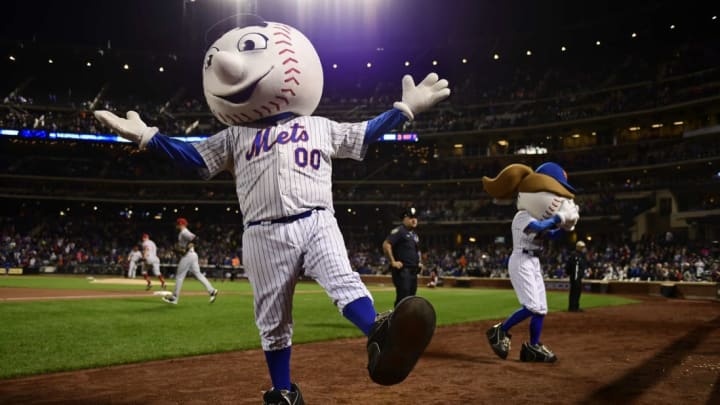During the New York Mets’ 1979 season, early arrivals to Shea Stadium could pass the time before the game by watching a stout little mule trot along the foul lines. Mr. Met, on the other hand, was nowhere in sight.
Though the baseball-headed mascot had been a fixture at games since he first took the field in 1964, the last time anyone had seen him was on the Mets’ yearbook cover in 1976. It’s not clear why Mr. Met went missing in action, but it’s possible that new management had something to do with it.
After owner Joan Payson died in 1975, her daughter, Lorinda “Linda” de Roulet, took over as president of the team, and penny-pinching became a prime focus of her administration. But the Mets’ popularity (and success) waned through the late 1970s, and de Roulet’s daughter Bebe suggested an innovative morale booster: a brand-new mascot in the form of a living, breathing horse-donkey hybrid. It wouldn’t be the first time MLB played host to a mule. Owner Charlie Finley had introduced one named Charlie-O as the mascot for his Kansas City Athletics in 1965. The mule stayed in the role—through the team’s move to Oakland a few years later—until his death in 1976.

Bebe’s idea apparently proved popular, and Arthur the mule made his Shea Stadium debut in 1979. His duties were confined to pre-game prancing and posing for pictures, but he could’ve been a much more integral part of the team. “Actually, there was serious talk in spring training (in 1979) by the de Roulets to have the relievers come in from the bullpen on the mule,” former Mets promotions director Loren Mathews told the Chicago Tribune in 1992. “I told them there was no way I could in good conscience tell Bob Apodaca that from now on he’d be coming into a game with the tying runs on base, bottom of the ninth inning, riding in from the outfield on a mule.”
Later that season, Mets management dangled a carrot in front of fans: Rename Arthur for a chance to win a trip to next year’s spring training. The prize went to New Jersey resident Dolores Mapps, who proposed “Mettle” because it represented “spirit, ardor, stamina and courage, all of which the Mets have in abundance.” (“Also,” as Morristown, New Jersey’s Daily Record pointed out, “the name of the team is in the word.”) Some fans interpreted the moniker as an aspirational one. “The way they play, they need all those things,” one fan told the Daily Record. Another suggested they call Arthur “Help” instead.
As far as help went, the newly christened Mettle didn’t give the Mets any. Not only did the team finish the season with the worst record in their division, but the average attendance was the lowest in Mets history. When businessmen Fred Wilpon and Nelson Doubleday Jr. bought the Mets the following year, they swiftly put the ill-fated mule out to pasture. But they weren’t so quick to resurrect Mr. Met—fans didn’t get to welcome him back until the mid-1990s.
